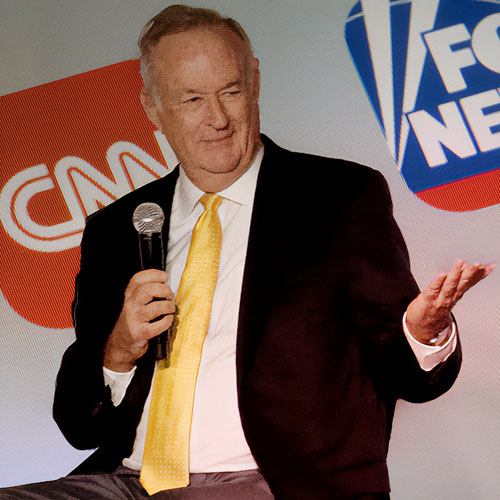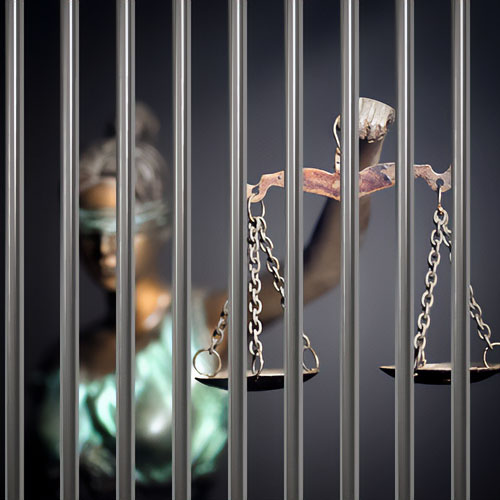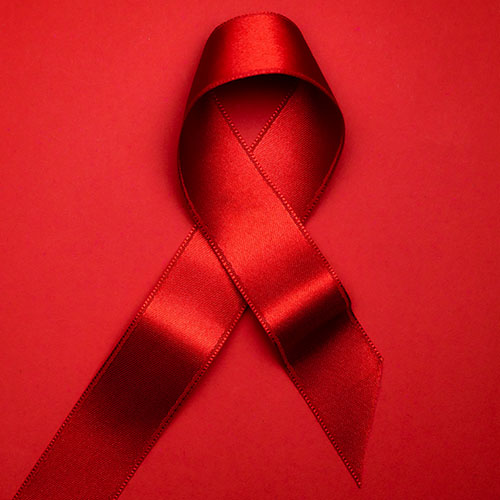Driven by green the international oil companies and their colleagues have sold America into economic slavery.
Big Oil, Big Banks, Big Trouble
Big Oil, Big Banks, and OPEC — the oil-banking complex — have taken the place of the military-industrial complex as the most influential and most threatening force in our lives.
Melodramatic as the statement may sound, it is nonetheless true that the major international oil companies and their colleagues in the international banking industry have reduced America to economic helplessness. Albert M. Wojnilower, chief economist for the First Boston corporation, says it right: “More and more, oil is money. Oil is the store of value and the medium of exchange.” And because of this transformation the United States has “lost it’s ability to run an independent economic policy,” our government is unable to solve the energy crisis because the energy crisis has been transformed into a money crisis as well.
We cannot separate the oil and money industries. The last Senate investigation of their interlocking relationship found, for example, that Citicorp ($103 billion in assets_ Chase Manhattan Bank ($65 billion), two of the ten largest banks in the world, were affiliated with 12 oil companies through a total of 27 directors. This kind of intertwining runs through the two industries, and the addition of the Organization of Petroleum-Exporting Countries (OPEC) to the oil-banking complex in recent years has made it all the more tightly knit.
They have become like Siamese twins joined at the cash register. Separate them, and you could kill one or both, but you could also kill our economy at the same time. With a great exertion of national will, through conservation and competition from other fuels, we might control energy prices. But that solution works only in the abstract. In reality, we cannot afford to do anything to upset seriously the profits of the major international oil companies, because to do so would at the same time seriously reduce the income of OPEC, and a financially injured and angered OPEC might easily strike back in such a way as to shatter our financial system. Indeed, as will be shown later, we may now be approaching that point.
The fear of this happening has paralyzed our government in its relationship with the oil-producing countries of the Middle East. In a very real sense, the Arabs now control the U.S. economic pacemaker. We have become hostage to that portion of their riches — many billions of dollars — deposited with our banks and invested in our corporations and in our government itself.
Always there is the fear that the Arabs may take their money and go elsewhere. Sen. Charles Percy, one of the Senate’s foreign-relations and economic experts, described the threat in its rawest terms:
“There could be another war out there in the Middle East, and as part of it the Arab league could say, “Pull out every last cent you have deposited in the United States.’ What happens if this theoretical possibility occurs? What happens if the plug is pulled on us altogether?” Could the targeted banks stand the trauma, or would they fold? And if they folded, would they bring down our financial house of cards? A senior State Department official recently acknowledged that “just the fear that they might withdraw gives them significant leverage. We have added a second layer of potential vulnerability — dependence on Arab petrodollars — to our initial dependence on their oil.”
The hub of Arab strength lies preeminently in Saudi Arabia. It is OPEC’s biggest producer, biggest earner, biggest investor abroad. It is the nation with the most deposits in U.S. banks, the most investments in commercial real estate, the most investments in U.S. government securities. From 18 weeks. of pumping oil, the Saudis earn enough to buy General Motors; in 24 weeks they earn enough to buy Exxon, the largest industrial corporation in the United States; Tiffany’s could be purchased from the income of a mere 18 hours of pumping. In a confidential report to the International Monetary Fund in 1978, the Saudis estimated that their international investments totaled $133 billion. Since then they have probably added another $100 billion or so.
So wide and deep is the Saudis’ presence in the world’s treasury that any time they choose to do so, they could launch a monetary crisis by selling off their dollars and switching to, say, deutsche marks. They could achieve the same end by unloading their dollars and turning to gold instead. To be sure, they might lose a few billion in the switch, but if they felt that their pride or their national security called for it, or if they felt sufficiently piqued by our foreign policy, they would undoubtedly be willing to make the slight sacrifice of a few billion — knowing that a couple of months’ pumping would replenish whatever losses they suffered.
We are indeed at the Saudis’ mercy. Louis J. Walinsky, who did a study of Arab investments in this country for B’nai B’rith, sizes up the situation accurately:
“Partly because the politically powerful financial and banking communities have a strong vested interest in these investments, partly because public officials have viewed them as beneficial, and partly because these investments have reinforced, and been reinforced by, other factors, like control over oil supply and surplus, and Arab purchases here, Saudi Arabia has acquired a degree of influence and power over the United States never achieved by any other nation in our history.”
“The bankers went to their friends in high places and urged that our government not oppose OPEC’s staggering price increases. They got their way.”
He could have said the same thing about OPEC in general.
Our political leaders are well aware of the Arabs’ strength and of their willingness to use it. Fresh in their minds is the humbling experience of Joe Clark, who, when he became prime minister of Canada briefly in 1979, said that he intended to move Canada’s embassy in Israel from Tel Aviv to Jerusalem — a gesture that pleased Jewish voters. But it enraged the Arabs, who threatened to withdraw their money from Canadian banks, dump their Canadian money holdings, and cancel proposed investment in Canadian industry. Clark backed down.
If Canada, where the Middle Eastern oil producers have invested a relatively trifling amount, is vulnerable to such blackmail, we are much more vulnerable.
Here’s how we got into this unpleasant predicament. When the OPEC nations, under the guidance of the major oil companies, raised prices 400 percent between 1973 and 1974, money began to flood into those backward nations so fast that they didn’t know what to do with it all. Their oil income jumped from $29 billion in 1973 to $100 billion in 1974. Oil that was selling for $2.59 a barrel in 1973 sold for $10.95 a barrel in 1974. (Today the same oil sells for more than $30 a barrel.) Except for Iran the producing countries had no industrial base on which to build. The only thing they could do with the money was to take it to the bank or buy property in the major industrial nations, particularly the United States.
Naturally, American bankers were overjoyed to have these new billions to play with. And they lusted for more. A confidential study by the World Bank predicted that the Arab oil-producing bloc might have more than $1,000 billion — $1 trillion — to invest in the United States and other countries by 1985. That would be ten times the total book value of U.S. investments overseas as of 1973, and it would be 100. times the value of all the gold held by the U.S. government.
The bait was too tempting. The bankers went to their friends in high places and urged that our government not oppose OPEC’s staggering price increases. They got their way.
For our government to allow consumers to be looted for the mutual benefit of oil producers and bankers was bad enough. But in terms of long-range harm, the even more troublesome development was that the greed was allowed to be so concentrated. Concentration was, and continues to be, the truly dangerous element in the bankers’ scheme.
If there were hundreds of big Arab investors and if they had invested their money in dozens of U.S. banks — really spread it around — there would be no threat. For one thing, successful conspiracies are difficult to achieve among many participants. But, most important, if the money were widely dispersed among many banks, then an avalanche of withdrawals could not affect any one bank in a devastating way. But that isn’t the way things turned out. What we have is a very few OPEC depositors whose deposits are concentrated in a handful of very large New York banks whose financial health, in turn, is crucial to the U.S. banking system. One of Chase Manhattan’s top officials admitted, “You really have the problem of a very small number of banks, a relatively small number of [oil] countries, and a relatively small number of depositors in those countries. In Saudi Arabia you are talking about one or two or three depositors. You are talking about ten banks or probably twenty, and probably the first five represent way more than half of it.”
Some experts, in fact, believe that most of the OPEC money is in only three New York banks-First” National City Bank (Citicorp), Chase Manhattan, and Morgan Guaranty. A top staff member of the Senate Foreign Relations Committee says: “I think you will probably catch seventy-five percent of the money right there. You’ll probably catch seventy-five percent of the funds in those three banks.”
If you count in the Chemical Bank of New York, Manufacturers Hanover, and the Bank of America, you will have the six banks that handle 90 percent of the OPEC booty. The other 10 percent of the OPEC deposits would be found, according to Federal Reserve Board member Philip E. Coldwell, in the next six largest banks, but since their total share is so insignificant, no single share is worth mentioning. So long as that situation exists, the great danger of what one or two Arab depositors might do to our banking system by destroying a keystone bank is both psychological and real.
The psychological danger surfaced in the fall of 1978 when Kuwait — a piece of sand about the size of Connecticut with a population less than that of Baltimore — came close to shattering our monetary bubble. On the last day of October of that year, rumor spread along Wall Street that the tiny oil kingdom had withdrawn a huge deposit from Morgan Guaranty Bank of New York City. The rumor was that the withdrawal was for some amount between $1 billion and $2 billion. On the world monetary market, the dollar was already looked upon as a soggy piece of merchandise. International bankers were dumping it in large quantities and turning to harder and more stable currencies. The rumor of the Kuwait pullout triggered a new wave of dumping — a wave that finally reached such monstrous proportions that it had the effect of a run on the currency, and for a moment the nation’s econo — my teetered on the edge of what the Wall Street Journal later called “a nineteenth-century type of financial panic.”
We did not fall over that edge only because the administration rushed in desperately and bought $30 billion worth of dying dollars on the world market, there — by making it seem that our currency was worth having. The price of the dollar stabilized for the moment, and the panic was past.
Memories of that episode still send a chill through U. S. financial circles. What made it all the more frightening was that the rumor was only a rumor — Kuwait had not withdrawn a large bundle from Morgan Guaranty. If a mere rumor could have such devastating results, what would an actual withdrawal of billions of dollars do to the banks involved?
We almost got a chance to find out on November 14, 1979, when Iran announced that it was pulling all its funds — something between $6 billion and $12 billion, depending on whose word you wanted to take — from U.S. banks. When President Carter got word of the move at 6:00 A.M, he climbed right out of bed and declared a national emergency (“an extraordinary threat to the national security and foreign policy of the U.S.”), and by 8:00 AM. he had seized Iran’s bank deposits. He was justified in being jumpy, for in 197 4 the Franklin National Bank of New York had gone out of business in a fiasco involving only $1. 7 billion.
The seizure of the Iranian deposits to protect our banks was the second half of the act. The first half had found the United States shaping its foreign policy to meet the needs of Chase Manhattan Bank.
This is the background for that costly act of monetary mercy. In 1953 Iranian rebels temporarily deposed the shah and replaced him with a fierce nationalist named Mossadegh. The CIA promptly overthrew Mossadegh and reinstalled the shah, who was forced to show his gratitude by permitting several of our oil companies to obtain concessions there for the first time. Three of the largest concessions went to companies controlled by the Rockefeller family.
“The profits of OPEC have become so great that they threaten to… touch off a world depression so complete that not even the oil-banking complex will escape.”
It was the beginning of a great romance between the shah and David Rockefeller of Chase Manhattan. From the early 1960s until the shah was overthrown in 1979, Chase was the dominant bank in Iran. Whenever the shah wanted to borrow money for his government, he always specified that Chase be the manager of the lending consortium. Together they worked to develop Iran’s oil into a great fortune that would be mutually beneficial. It was Secretary of State Henry Kissinger, a Rockefeller protege, who, at least tacitly, encouraged the shah to push for higher oil prices. (Since leaving office, Kissinger has returned to Rockefeller’s bank as an “adviser.”) The more money the shah took in, the more he would have to deposit with Chase.
And that’s exactly how it worked out. Toward the end of the shah’s reign, the government of Iran had nearly $3 billion on deposit with Chase-almost 8 percent of the bank’s total deposits, or quite enough to keep Mr. Rockefeller on a very short leash. But the $3 billion was, in fact, only a fraction of the sum by which the shah controlled Mr. Rockefeller’s affections. Over the years the shah and his family stole billions from his country’s treasury and deposited much of it with Chase. (Estimates range up to $25 billion, but that’s probably extravagant.)
After the shah fled Iran, the new government, knowing of Rockefeller’s alliance with the shah and hating him for it, began pulling its money from Chase and depositing it in the foreign branches of other banks: Bankers Trust, Bank of America, etc. When that happened, Rockefeller had no reason to try to maintain friendly relations with Iran. But he had all the more reason to keep the shah’s friendship, lest the exiled dictator pull his stolen fortune from Chase. So when the shah asked to come to America, Rockefeller and Kissinger put enough pressure on President Carter to bring it about, under the pretense that he was being let in for health reasons. Thus was triggered the long, debilitating tug-of-war over the embassy hostages.
Carter’s decision to admit the shah was disastrous to this nation’s peace of mind, but it was a fine decision for Chase Manhattan Bank and the whole banking system. If Rockefeller and Kissinger had failed to persuade Carter, and if that had prompted the sulking shah to pull his billions from Chase’s vaults, what would have happened? As one Swiss economist explained with a shrug, “If you pull five billion dollars from Chase Manhattan, they will lock the door.”
There is no possible way that the government can prepare a strategic defense against financial blackmail by the Arabs unless it knows how much of their money the various oil-producing nations have on deposit and in which banks. It must know, further, whether the money is on deposit in this country or in the bank’s foreign branches. But when Congress has tried, feebly, to get answers to these questions, the bankers have simply refused to tell — and they have gotten away with it. Their reasoning is simple: profits should come before patriotism. The Arabs want secrecy, and the bankers are all too willing to oblige — for a price. As Hans Angermueller, vice-president and general counsel of National City Bank, the nation’s largest, once told a Senate committee that was trying to pry the truth out of him: “We wonder if in a balance of risk against reward it is worth subjecting the major U.S. international banks to losing their OPEC customer relationships in order to glean some knowledge of where… the world’s petrodollars ended up. We think the balance should run against running that risk.”
This attitude should come as no surprise. Twenty years ago three-fourths of the largest banks in the world were right here in this country. Today, only 4 of the largest 20 are U. S. — based banks, and these are the most influential in the oil-banking complex. The United States no longer dominates world banking the way it once did, and it has a difficult time trying to hold the allegiance of its largest banks. Their attitude is global, multinational. They think of themselves as being part of the world banking community, not as representatives of the United States in that community. Their allegiance, in short, is elsewhere.
The General Accounting Office, Congress’s investigating agency, estimates that as of the middle of last year (the latest count made public) OPEC nations had $32 billion deposited in the largest U. S. banks, but most nongovernment experts feel that this is a ridiculously low estimate. For one thing, the government is counting only deposits that OPEC has its name on. But there is nothing to prevent the oil producers from concealing deposits under bogus names.
Courtenay M. Slater, chief economist of the Department of Commerce, has admitted that if foreign investors choose to hide their country of origin and their personal identity, they can get by with it easily. Paul Erdman, one of the sharper observers of foreign investments, submitted a report to Congress in which he estimated that the OPEC nations probably have as many concealed investments in this country as they have identified investments. The concealed investments, he said, are made daily “via fiduciary arrangements with foreign banks… ranging from Singapore to the Bahamas.” Why the secrecy? “For two obvious reasons… Such arrangements conceal the huge amount of OPEC, especially Arab, investment with U.S. banks and in the U. S. dollar, a matter about which the Saudis are especially touchy, and, secondly, they provide a guarantee against direct sequestership of such funds should there be an American-Arab confrontation which would lead to such a step.”
It is believed that since the United States seized Iranian funds, the remaining OPEC nations have moved increasingly to concealed investments.
Obviously, such secrecy makes it impossible for federal bookkeepers to keep track of what’s going on, and the U.S. financial structure is thereby left more vulnerable. The ignorance of our bureaucrats was revealed recently in the significant cross-examination of G. Fred Bergsten, assistant secretary of the Treasury for International Affairs, during a session of the House Committee on Government Operations.
Chairman Benjamin Rosenthal demanded an answer:
“Is there anybody in the United States government who knows how much the OPEC countries have invested in U.S. securities, in U.S. banks, or U. S. resources? Is there anybody in the U.S. government who knows that?”
Bergsten: “There would be no one who would know, Mr. Chairman…”
Rosenthal: “What is the outer limit of your best upper guesstimate including direct, indirect, hidden, or anything you want-covered, uncovered-anything, altogether?”
Bergsten: “Gee, I have not put those numbers together.”
The government’s strangely supine ignorance extends to all OPEC investments, not just its bank deposits. J. Dexter Peach of the General Accounting Office says, “The government has no record of how much portfolio investments in a U.S. sector or industry is being held by OPEC” — that is, nobody in government knows how much of our corporate stocks and bonds OPEC nations own (the lowest estimate is $10 billion worth). Nor do they have any idea how many businesses or how much real estate the Arabs own.
It is known that, in addition to hotels and cattle ranches and clothing-manufacturing plants and trucking firms and all sorts of other enterprises, the OPEC barons now own all or part of the Bank of the Commonwealth in Michigan (a bank that Rockefeller’s Chase had tried to prop up with a $20 million loan; when that failed, Rockefeller called on the Arabs for help), the Main Bank of Houston, the National Bank of Georgia, the Union Chelsea National Bank of New York, the First National Bank of Hialeah, and the Security National Bank in California-and that is an incomplete list.
“The Saudis could launch a monetary crisis by unloading their dollars and turning to gold instead.”
Sen. H. John Heinz Ill, a member of the Senate Banking Committee, warns that if all the currently proposed bank acquisitions are approved by the Federal Reserve Board, “foreign-owned bank assets will soar to more than ninety-five billion dollars — almost ten percent of the total bank assets in the United States.” Because of various techniques for hiding ownership, it would be impossible to know just how much of the control lies in the hands of the oil-producing nations. But one thing is certain: the danger comes not only from OPEC governments but also from individuals, the superrich princes living in those Arab nations. As Heinz admits, “With the tens of billions of dollars in surpluses being accumulated by OPEC states, the prospect of private citizens of those countries buying our major banks has become very real. In 1978, for example, the SEC charged four Arab businessmen with violations of securities laws for secretly attempting to acquire control of the $2.2 billion Financial General Bankshares, a Washington, D.C. — area bank holding company. It seems likely that the prospect of both direct and indirect financial and political influence will convince more wealthy Arab that American banks are promising investments.” The kind of influence they could exert is evident in the fact that in New York and in California, where the foreign bankers have moved in most heavily, they now account for nearly 30 percent of all big business loans.
Many Americans are becoming alarmed, understandably, by the invasion of foreign money. Twenty-five states now restrict foreign investment in some way. Iowa, perhaps the toughest, outlaws foreign purchase of farmland and sharply limits foreign ownership of industrial property. But the federal government shows no concern about the problem. None of the bureaucrats in Washington are trying seriously to keep track of foreign investments in commercial real estate. If you ask officials at the Department of Housing, they’ll tell you that they think foreigners have put about $4 billion in such investments, and they think that about 40 percent of the purchases have been in New York City, but they don’t know — and they seemingly don’t care. HUD officials acknowledge that foreign purchases “appear” to have added to real-estate inflation, but they say that they can’t be sure about it.
One reason for the federal bureaucracy’s timid approach to the problem is that Washington’s money changers are afraid that if they push the America-for-Americans theme too hard, foreigners will stop buying government securities. That would be pretty rough on the bureaucrats. They might have a hard time raising money if they depended on U. S. investors. In some recent years OPEC nations have financed most of the U.S. Treasury’s domestic borrowings. In the midst of the 197 4 recession, Edwin Yeo, under secretary for monetary affairs at the State Department, admitted that this country was looking to foreign capital to pay for our recovery. “We can finance the American economy without these funds,” he said, “but it is more difficult.”
But even the best rackets cannot last forever. As things are presently developing, it seems that the greed of the oil bankers may consume them (even while, unfortunately, it consumes us all). The profits of OPEC have become so great that they threaten to swamp the world’s monetary systems and touch off a world depression so complete that not even the oil-banking complex will escape.
The speed at which the crisis develops will depend on (1) what further harm OPEC does to the dollar and (2) how the banks decide to cope — if they can cope at all — with the rising oil-consumption debt.
It used to be that the world’s currency values were fairly stable. A person could be reasonably certain from month to month what the dollar would be worth in comparison to, say, the yen or the mark. But for the past decade — and particularly since the oil profiteering began in earnest in 1973-74 — the world’s monetary systems have suffered from chronic instability. There has been no way for the finance ministers — the central bankers — of the major industrial countries to impose stability because there was too much money in circulation outside their jurisdiction.
While this is a problem that afflicts all major currencies, it is especially critical in the way it afflicts the dollar, because the dollar is traditionally the standard by which all other currencies are measured.
The heart of the dollar problem lies in the “Eurocurrency” market. Eurocurrency is an ocean of “stateless money” — dollars from the United States (“Eurodollars”) and currencies from other countries, all floating beyond the reach of national regulators. The Eurocurrency market is a rather new phenomenon. It is the offspring of the multinational era.
Multinational corporations, including multinational banks, of course, do not like to be regulated by national governments. In this country the Federal Reserve Board tells banks what percentage of their deposits they can lend out and how much they must keep in reserve. Being able to control the money supply to some extent in this way, the Fed is also able to help control inflation. The central banks of most developed nations operate in the same way.
But with the spread of the multinational corporations around the world, the giant U. S. money changers went after the greater profits that could be made by throwing off the restraints of nationalism. They began setting up branches and affiliate banks overseas — where the Federal Reserve Board could not interfere with their operation. The big banks of other industrial nations also began to set up foreign branches to escape the regulations of their home governments. Most of these “escapees” are concentrated in England and in Europe, and into them have poured the stateless Eurocurrency, with Eurodollars making up about 80 percent of the fund.
Twenty years ago there was no such thing as a Eurodollar. Ten years ago there were probably less than $100 billion Eurodollars. Today there are an estimated $900 billion Eurodollars, a stunning amount that is playing hell with all efforts to control the world’s money supply (and inflation) and all efforts to stabilize currency rates. This was most dramatically illustrated in the United States by what happened after the Fed pushed interest rates to 15 percent (plus) in October 1979, hoping to cut inflation by making the price of money prohibitively high and thereby reducing the amount in circulation.
But the money supply didn’t dry up. Eurodollars kept seeping into our economy. The big banks, faced with the Fed’s restrictions, simply tapped the virtually bottomless resources in their European branches and lent them out. Inflation kept right on going up. The Fed was completely frustrated.
And how does OPEC fit into the Euro-dollar adventure? Very heavily and very dangerously. “Experts” (actually there are no experts at this guessing game) believe that the oil producers have more than $60 billion — and some guesses go up to twice that amount-bouncing around the Eurodollar market. And, of course, their share of the market will probably continue to grow as their profits grow. What makes the OPEC presence so scary is that the Arabs are totally unpredictable and unstable. At any moment they may decide, for whatever cockeyed reason, to shift a sizable hunk of their wealth from dollars to some other currency, throwing the world’s money kite into at least a temporary tailspin. Shifts of no more than $10 billion in the Eurodollar market have had harmful effects in the past. Or the Arabs, deciding that they want to get out of the dollar altogether, could continue the gold-buying binge they began in late 1979, a binge that drove gold prices into the sky and at the same time seriously weakened the dollar. If the Arabs were to continue to play with their billions in that rambunctious fashion, we may discover that all the Fed’s horses and all the Fed’s men can’t put the dollar’s pieces together again.
To understand this particular mess, one must go back again to 1973 and review the oil bankers’ scheme. At that time, when world oil prices made their first great surge, the bankers said not to worry; OPEC’s profits would be “recycled.” By that they meant OPEC nations, being unable to spend much of their loot, would deposit the bulk of it in the West em-based international banks; the banks would then lend the money to oil consumers, which would pay OPEC for more oil; OPEC would again deposit this money in the big oil banks, et cetera, with the money going in a circle.
The international bankers were so euphoric at the prospect of all the big bucks coming their way that they predicted the money cycle would go on forever, with the banks, oil companies, and OPEC profiting endlessly.
This was a very tricky game the bankers were playing, and recent results show that they did not know how to play it nearly so well as they thought they could. The recycling apparatus has begun to break down under the sheer weight of OPEC’s deposits.
OPEC’s latest price increases are expected to give the oil-producing nations at least a $130 billion surplus from 1979 and 1980 production alone, with other huge surpluses in the years ahead. (The oil companies, of course, are floating high on the same sea of cash. In 1978 the major companies had a stunning $26 billion combined cash flow, and the decontrol of domestic oil-pegged to OPEC prices-is expected to dump an extra $49 billion to $80 billion, after taxes, in their pocket by 1984. That’s $49 to $80 billion on top of present record profits.)
Once delighted to wallow in such riches, now the oil bankers are afraid that they may drown in them. The glut has become almost unmanageable. “Increasingly,” says Ann Crittenden, financial writer for the New York Times, “individuals close to those [money) markets are warning that the private banking system may not be able to handle the new stresses.”
One of the closest observers of the “new stresses” is Rimmer DeVries, senior vice-president and chief international economist for the Morgan Guaranty Trust Company. He warns that “the oil numbers [OPEC money surpluses) are getting to a point where we may be on the brink of severe trouble.” He thinks that OPEC’s foreign investments and cash assets will probably reach $500 billion by 1983. “Amounts of that magnitude feeding into the system could produce enormous exchange rate instability, particularly as the oil producers have shown that they want to switch their funds as much as possible out of the dollar.
“There is also concern within the banks — and here I have to be careful, for I am a banker — about those deposits. There is a growing concern with… bloated balance sheets, and a question whether the banking system itself can accept a great increase in these deposits.”
The bleak question confronting the bankers is this: To whom will they lend these enormous new surpluses?
Banks cannot stay in business by holding money and paying interest on it. They must lend it and earn interest or go out of business.
Ah yes, for a few years the “recycling” of the oil money seemed to go beautifully. No sooner were OPEC’s surpluses deposited than they were borrowed at a high interest rate; much of the borrowing was done by the smaller consuming nations — the non-OPEC Third World nations that don’t have much money but have a pitiful need for oil. As OPEC prices climbed, these nations literally would have been driven back to the Dark Ages if they had not been able to borrow the difference.
The trouble is, they have borrowed so much during the past six years that they are dangerously in debt. As borrowers, they are beginning to look very risky. The oil bankers are afraid — with good reason — that one of these days the shoeless nations, being unable to pay the interest on their mounting oil debt, much less the principal, will simply declare bankruptcy, leaving the oil banks with such a mountain of IOUs that the banks themselves will go bankrupt. As of this year, the commercial banks of the industrial world are holding an estimated $150 billion in IOUs from some very shaky Third World debtors, and of this, U. S. commercial banks are holding nearly $80 billion — $41.6 billion from Asia, $3.6 billion from Africa, and $33.8 billion from South America and the Caribbean. And that debt is expected to climb by at least $10 billion a year from now on. What if some of these nations, weary of struggling with their “recycling” oil debts, were to say to hell with it? Our commercial banking system would be in very, very deep trouble.
The recycling breakdown means that the banks will sooner or later drop the rate of interest they pay to OPEC depositors in the hopes that this will drive them away. When that happens, the Arabs will undoubtedly cut production. Why sell oil for dollars that are declining in value and then deposit the dollars in banks that are lowering their interest rates? Obviously, it would make more sense for the producers to keep their oil in the ground until a better business day dawns. And that’s exactly what the Arabs will do. Saudi Arabia has already told the world to prepare for that day.
This is the cloudy precipice to which the oil-banking complex has brought us. Where will they take us next? Over the edge? Who will stop them from taking that step? “Governments,” noted Walter J. Levy, the oil economist, “are still watching a continuous erosion of the world’s oil supply and financial systems, which, if nothing is done, could be comparable in its potential for economic and political disaster to the Great Depression. The time is late; the need for action, overwhelming.” But what action? Driven by greed, the oil producers and the oil bankers have brought us to a unique moment in history when one crisis — take your pick, oil or monetary — cannot be helped without exacerbating the other to intolerable proportions.

























